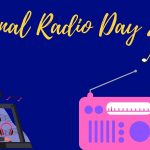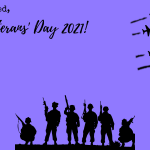Here in the U.S., today is normally a bank holiday (or federal holiday) formerly known as Columbus Day, Indigenous Peoples’ Day 2021. It falls on the second Monday in October. However, in recent years, there have been campaigns for a change to Indigenous Peoples’ Day at the national level, and understandably so. Columbus Day is the recognition at the federal level, but Indigenous Peoples’ Day is the recognition in some states and cities as part of a counter-celebration. Therefore, I will dedicate this post to acknowledging this bank holiday as Indigenous Peoples’ Day 2021.
My state started observing Indigenous Peoples’ Day in 2018, but regardless, it makes no bearing on my choice to honor today accordingly. The Wikipedia article talks about how Native American Day was back in August, and that the U.N. declared August 9th as an international holiday.
Before Indigenous Peoples’ Day gained traction beyond the local and state levels, today was recognized as Columbus Day. I’m sure a lot of people remember hearing about Christopher Columbus, and the narrative commonly told to us as kids. I remember learning in school about how great Columbus was, and that he had three ships: the Nina, Pinta, and Santa Maria.
I even remember we had a music program one year where we sang about him and how great he was. I don’t remember which grade that happened in, but for some reason it still stands out to me.
Knowing what I’ve learned about him, specifically this catalogue of atrocities Columbus and his army of jack-offs did to the people of the Arawak Nation, it’s horrifying on so many levels.
We weren’t taught about the violence Columbus and his team inflicted on the locals of what we now know as Haiti and the Dominican Republic. The fact that Columbus never set foot on the lower 48 of Turtle Island somehow never made it into our history books or our lessons. nor were we taught of the genocide from others with similar motives, whether by murder or exposure to deadly diseases that the locals didn’t have the immunity to up until they came along.
Nor were we taught about the forced assimilation of entire nations of people, like with the boarding schools or Canada’s version of them, and the human-rights abuses that went on behind closed doors at these institutions.
I’m not calling them schools, because from what I’ve learned about these places, they learned nothing there that they couldn’t have learned on their own with their families and communities.
We’re even seeing stories in the news about mass grave sites being dug up at these schools, like at Kamloops last summer, and at Carlisle. Six children were repatriated back to their families and nations, most of them being from the Lakota Nation, and one being from a nation in Alaska.
These were things I learned about in college, way late in the game. Some people don’t learn about them at all, and that needs to change.
Fortunately it seems to be changing, with more books and resources from cultural insiders like what Debbie Reese talks about on her blog. I found this blog back in college when I was taking a class and did my project on the depictions of Native Americans in kids’ books. I’ve been reading it ever since through the years.
That project highlighted just how ingrained in our collective society stereotypes about groups of people really are, and how normalized they’ve become. A lot of the books and other media considered popular show certain groups of people, like Native Americans, in stereotypical ways.
Some of the books I read and liked well enough as a kid were on that list. It was sad, but setting them aside in favor of more inclusive books was what had to be done.
We also see this in TV shows. Like for example, I got a Roku just before we moved, and one of the Pluto channels is Classic Toons. This one shows cartoons that have fallen into the public domain, and some series that lasted for like a nanosecond in the 60s and 70s. Example? There was one episode of Popeye that involved stereotypes about Native Americans, and to put it kindly, it didn’t age well.
It was so upsetting to see this, when the earlier episodes didn’t show anything like this. But it also shows how insidious prejudices, racism, and stereotypes can be, and how lasting their impact can be.
However, these stereotypes and ideas were wrong at the time, and always will be wrong. Not everyone thought the way the creators of that Popeye episode did, just like not everyone thought like Laura Ingalls Wilder at the time she was writing.
It goes to show how these ideas become normalized, and the more normalized they are, the harder it is to start pushing back on them on the larger scale.
Let’s push back on those ideas, and set aside books and other media forms with these ideas in favor of something more inclusive. Today, and every day after, let’s honor these communities and their ancestors. This post from Indian Country Today has a list of events going on this week in honor of Indigenous Peoples’ Day.
Another way to honor Indigenous Peoples’ Day is through a land acknowledgement. Dr. Reese also has a guide on how to create a land acknowledgement that actually recognizes the Native Nations that called that place their home long before Columbus ever came along.
As a blogger, and even though it’s not the same, I would like to take this opportunity to acknowledge that the genesis of this blog came to be on unceded homeland of the Ioway, Sauk, and Meskwaki Nations. The people of these Nations lived through centuries of subjugation, forced assimilation, exclusion, prejudice, racism, and erasure, and it’s still going on today. The ancestors of the Ioway, Sauk, and Meskwaki Nations lived here for centuries before sustained contact, and I offer my sincerest respect to their ancestors, the current generations, and future generations. My goal is to play a role in reaffirming those connections for the citizens of these nations today.
One way we can help reaffirm those connections, not just for the Ioway, Sauk, and Meskwaki Nations, is to seek out works by Native writers and creators. Dr. Jessica Metcalfe set up Beyond Buckskin Boutique several years ago as an alternative to the mall stores that profit off of caricatures, and a way for Native artisans and creators to sell their products and make their living.
BTW, one of the frequently asked questions is whether or not outsiders to their cultures can wear this stuff, and the answer is yes and yes! These artisans are cultural insiders who know how to create pieces that don’t include things that really shouldn’t be shared or sold.
Another business to support is Birchbark Books, run by Louise Erdrich, the author of the Birchbark House books. They carry books by Native writers, so you can guarantee you’re getting something written from the #OwnVoices perspective, from lived experience.
However, I do want to mention that there are some books written by Joseph Bruchac among the selections, and Bruchac has claimed Abenaki heritage. Ok, cool. I have no reason not to believe someone, since not everyone from an ethnic group will look the way commonly depicted in the media. I’m not an enrollment office, identity is a personal thing, and it’s up to the enrollment offices to make that call as to who they claim and grant citizenship to. According to some forums and websites, they’re saying otherwise.
That being said, this isn’t the focus of today’s post, but nonetheless, it was something I felt you readers deserved to know beforehand.
Over to you, readers. How will you celebrate Indigenous Peoples’ Day? I’d love to hear it, and I’d love to hear your takeaways. Drop it below like it’s hot, and let’s talk.



